
Key Points
- Equal Weighted S&P 500 on the Verge of an Important Reversal
- NYSE Breadth Remains Challenged
- New Lows on the NYSE have a Slight Upside Bias
- S&P 500 Metrics Move Lower Over the Past Two Weeks
- Small Caps Show the Greatest Improvement
Chart in Focus
The S&P 500 Equal Weighted Index relative to the S&P 500 (Cap Weighted) Index has shown a sharp improvement over the past week. The ratio has moved up and through the 50-day moving average and is now testing the 200-day moving average from below. During the July—September consolidation, the 14-day RSI was making higher lows, and this indicator is now in the process of shifting to a bullish regime. The price and momentum improvements for this ratio confirm the better breadth metrics that we highlight for Small Caps below.
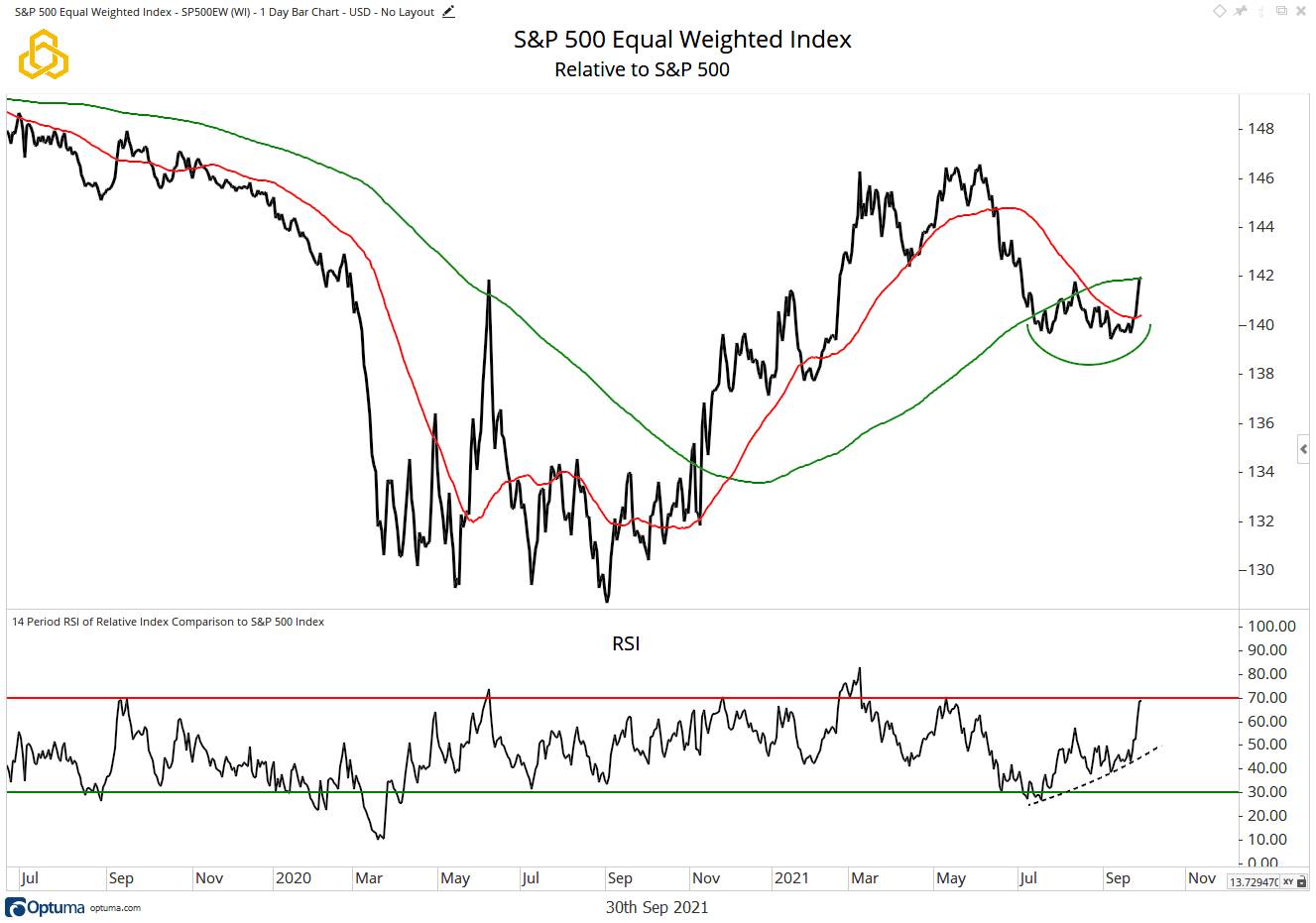
NYSE Breadth
The NYSE Advance/Decline Line remains under pressure this week, below the declining 50-day moving average, after failing to confirm the high for the S&P 500 in early September. This lack of confirmation has been a theme since June, and we continue to wonder how long it can last before there is a meaningful breakdown in the equity market. The S&P 500, itself, is below the 50-day moving average but has not broken key support at 4,200.
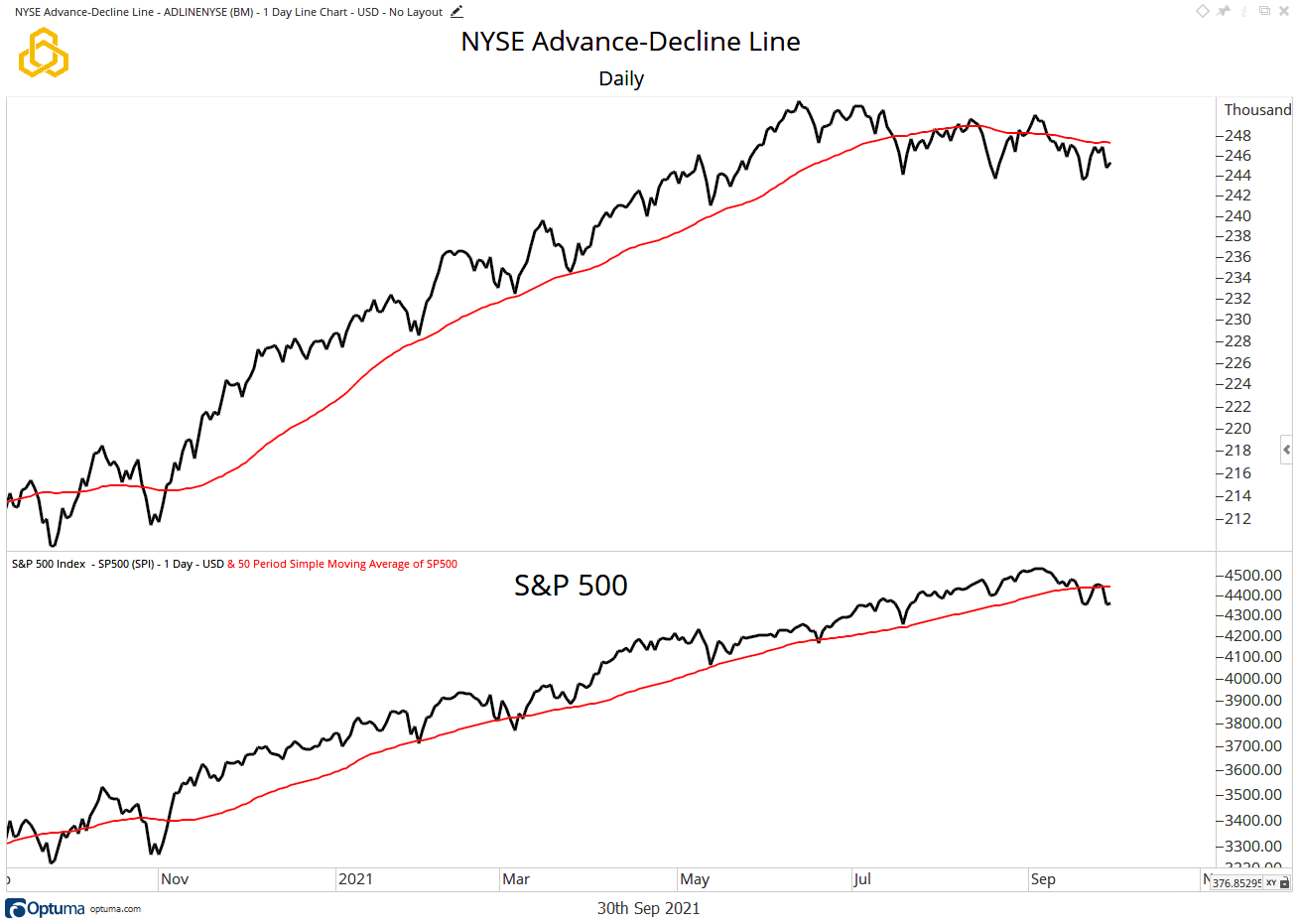
Likewise, the NYSE’s Advancing-Declining Volume Line remains in a steady downtrend that has been in place since May. The declining 50-day moving average has been resistance to rally attempts for the indicator, and that appears to be playing out once again.
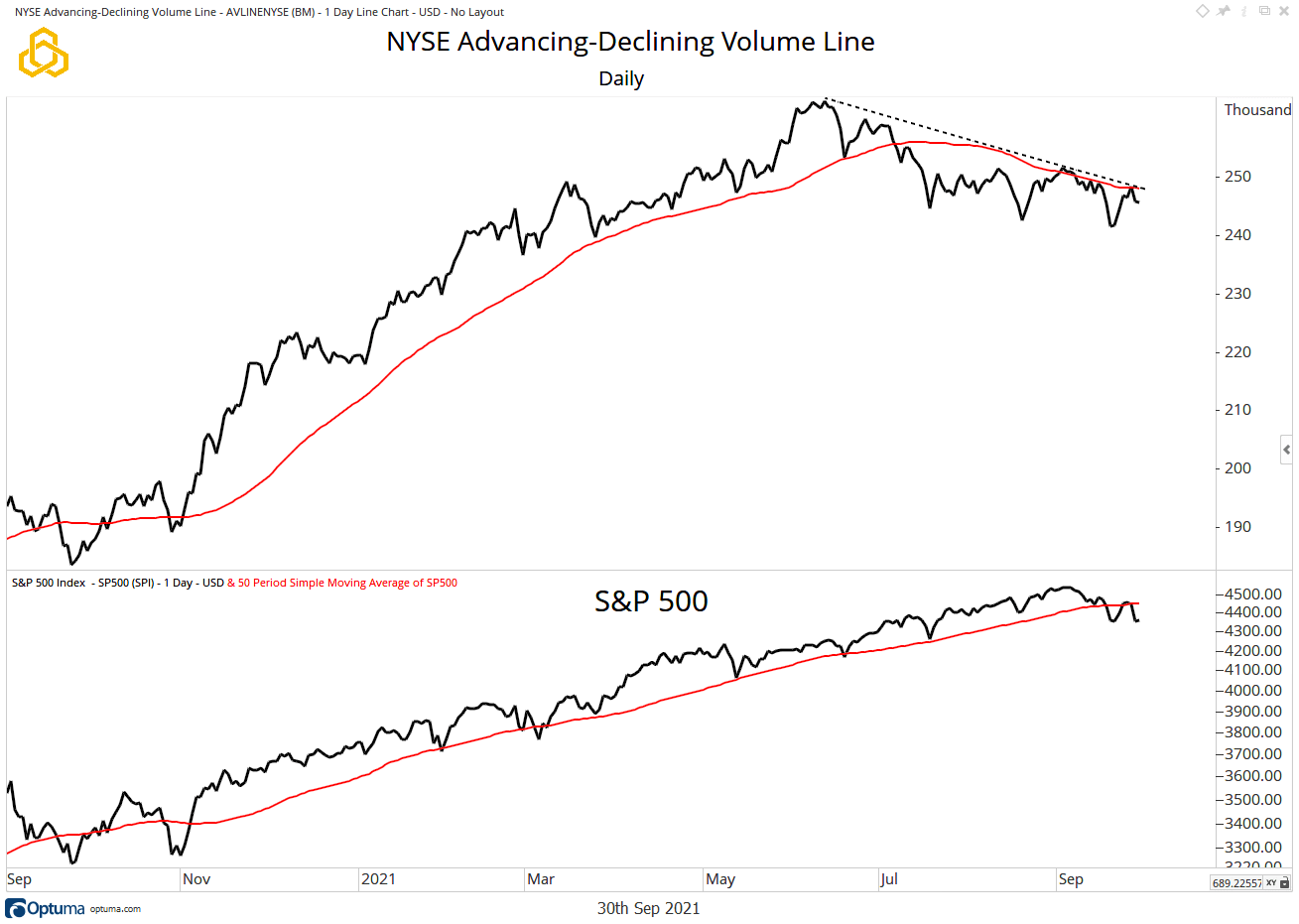
The 5-day moving averages of issues on the NYSE making new 52-week and six-month lows ticked higher again this week as stocks have come under pressure. Thus far, spikes in these metrics have been short-lived, but we would be remiss if we did not point out that the averages have been making higher lows since the summer.
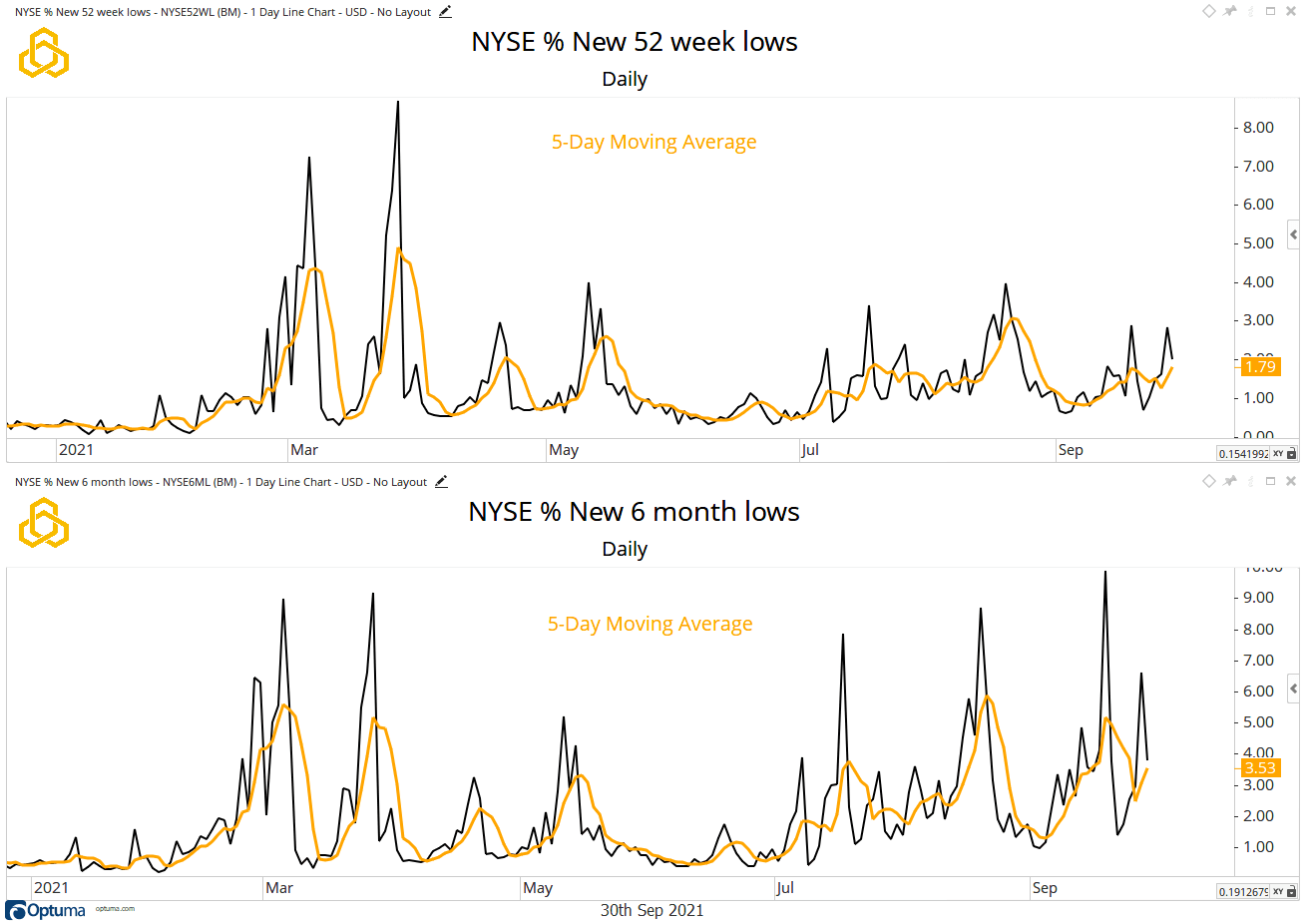
The 5-day moving averages of the percentage of NYSE issues making new six-month and 52-week highs continue to trend to the downside, a dynamic that has been playing out since May.
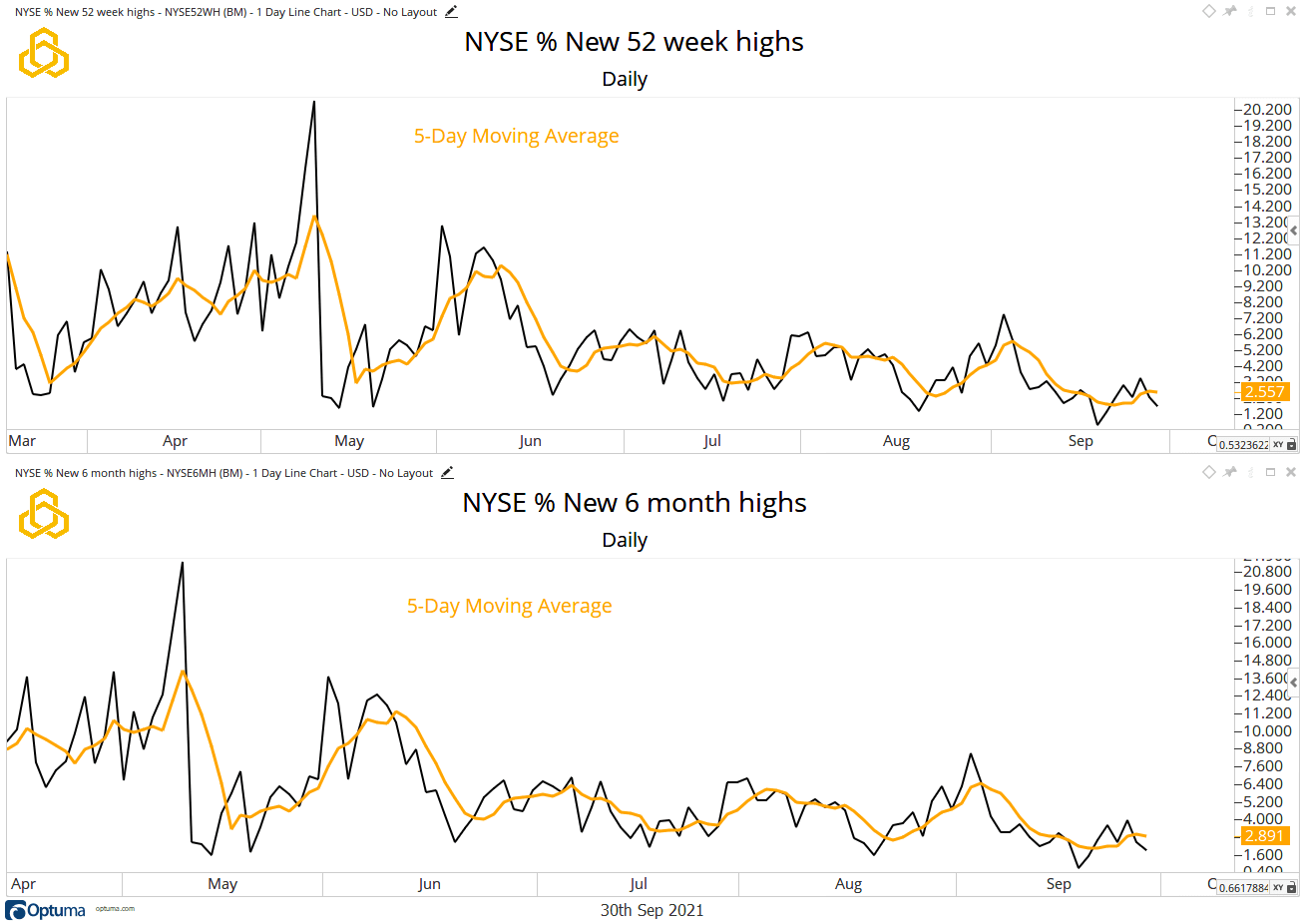
The percentage of stocks on the NYSE that are trading above their respective 200-day moving averages remains in a “textbook” downtrend since peaking late last year. The S&P 500 remains above its own 200-day moving average, which is approaching important support near 4,200.
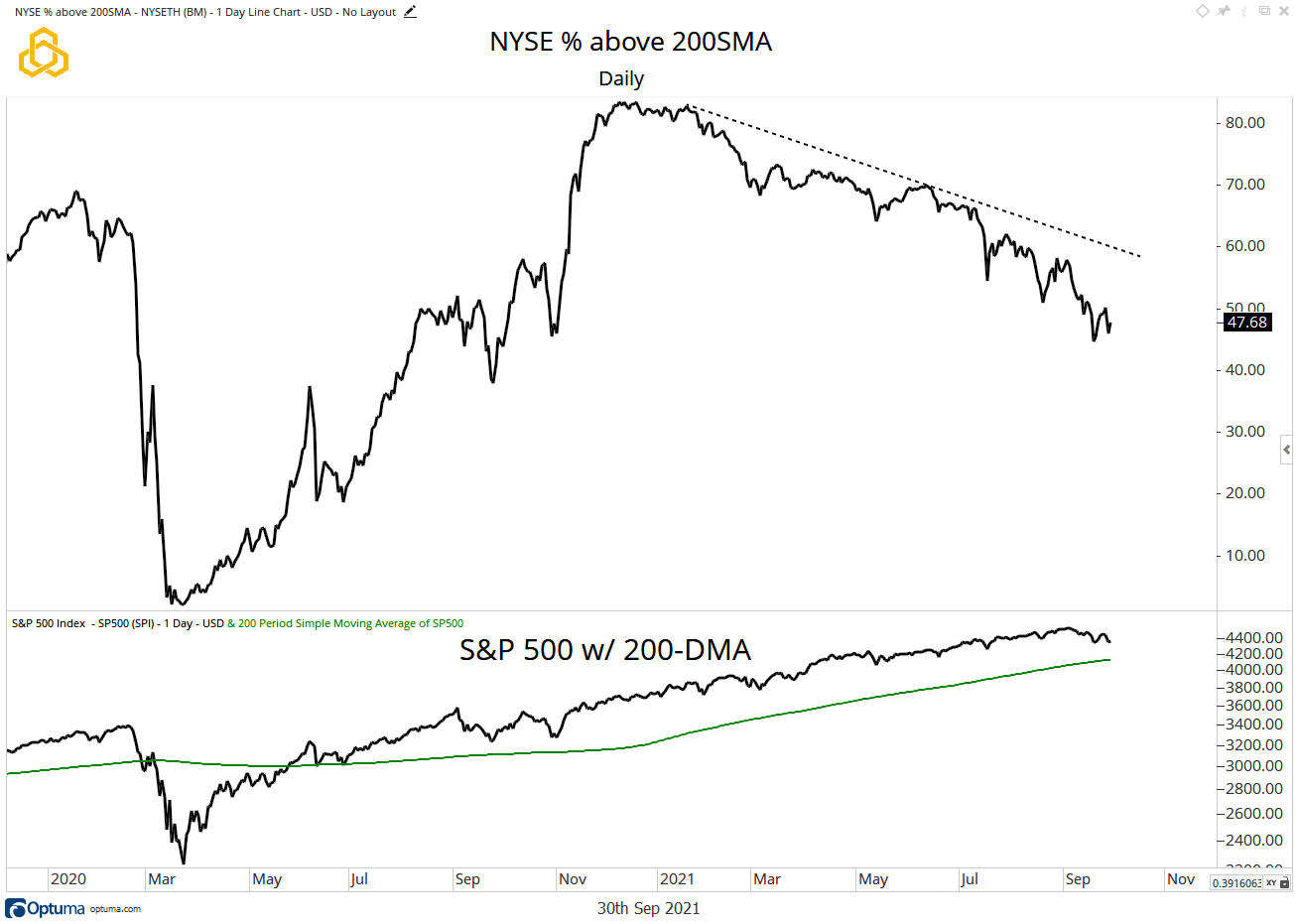
The percentage of issues on the NYSE trading above their 50-day moving averages also remains in a downtrend, but there is a subtle difference here. As the index broke below its 50-day moving average last week, the indicator did not register a lower low. This is a slightly positive development, and now we want to see the indictor break the downtrend.
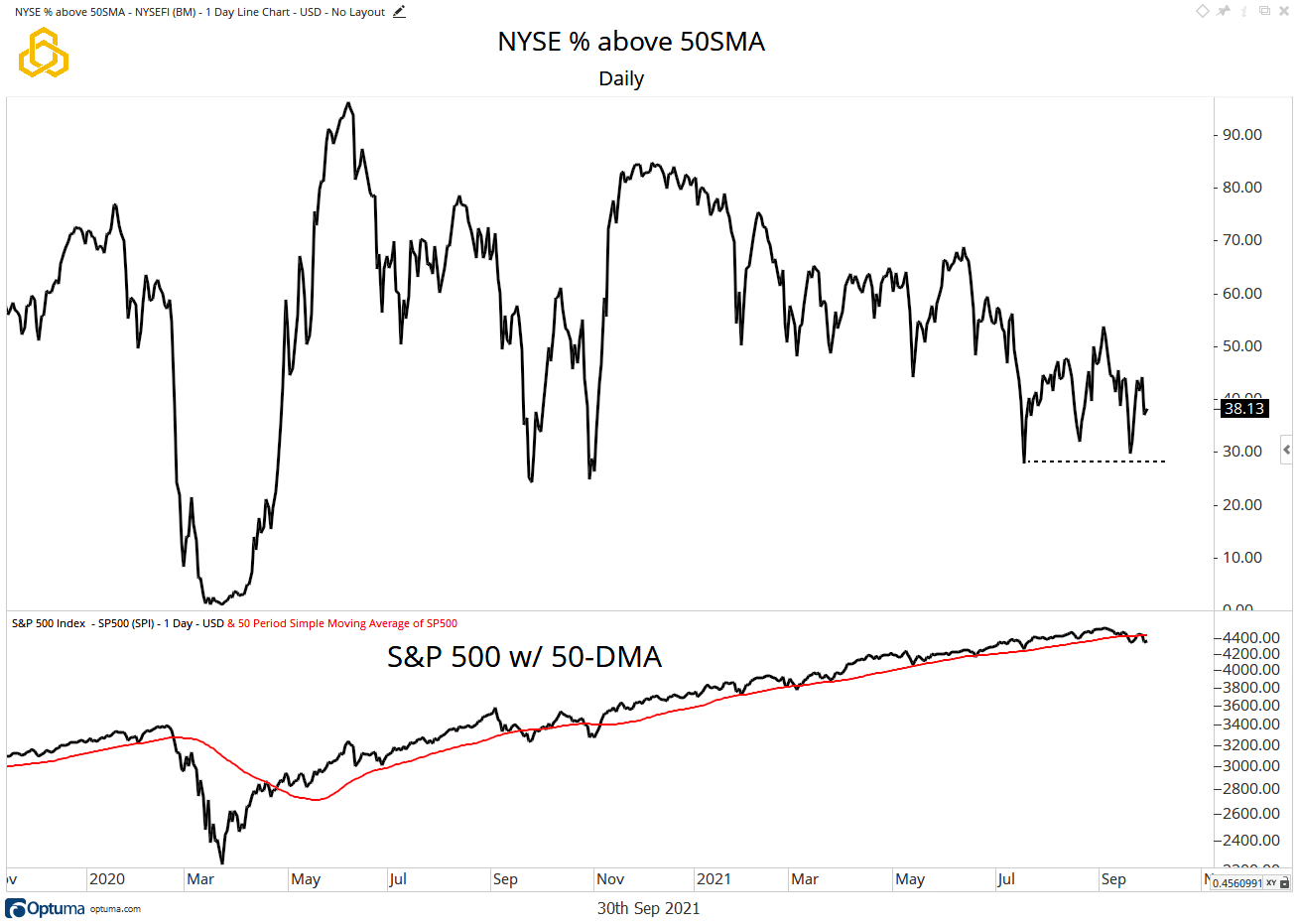
The percentage of stocks trading above their respective 20-day moving averages has also made a higher low in the near term. However, we are looking for the indicator to break the downtrend that has been in place since last November before we can have conviction that short-term breadth is improving. This is especially true as the S&P 500 remains below its own 20-day moving average.
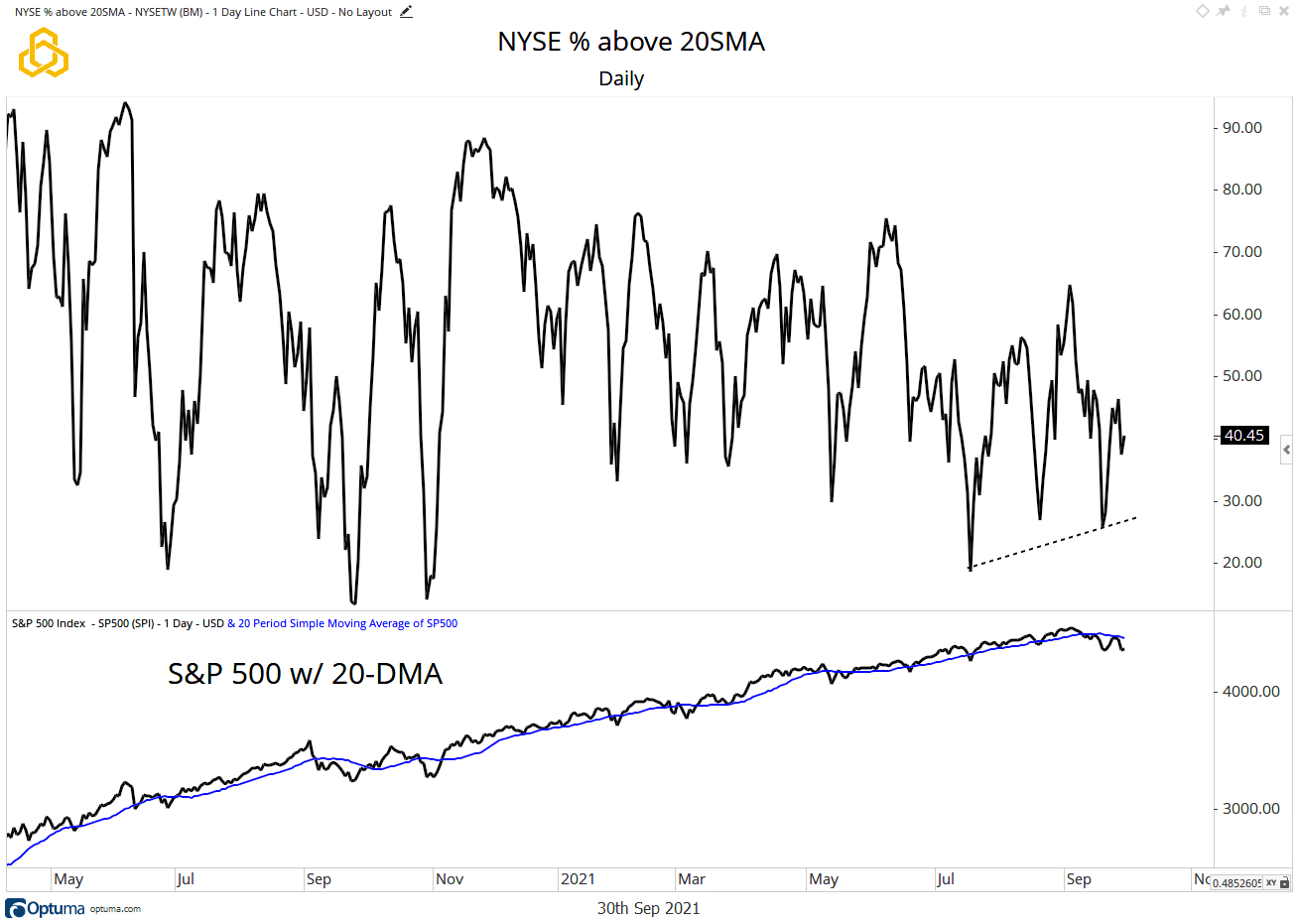
S&P 500 Breadth
Breadth metrics for the S&P 500 have weakened over the course of the past two weeks, across all metrics that we track:
- Advance/Decline Line: Holding below the 50-day moving average.
- Percent Above Their 200-Day Moving Average: 68% from 74% two weeks ago.
- Percent Above Their 50-Day Moving Average: 33% from 52% two weeks ago.
- Percent Above Their 20-Day Moving Average: 32% from 41% two weeks ago.
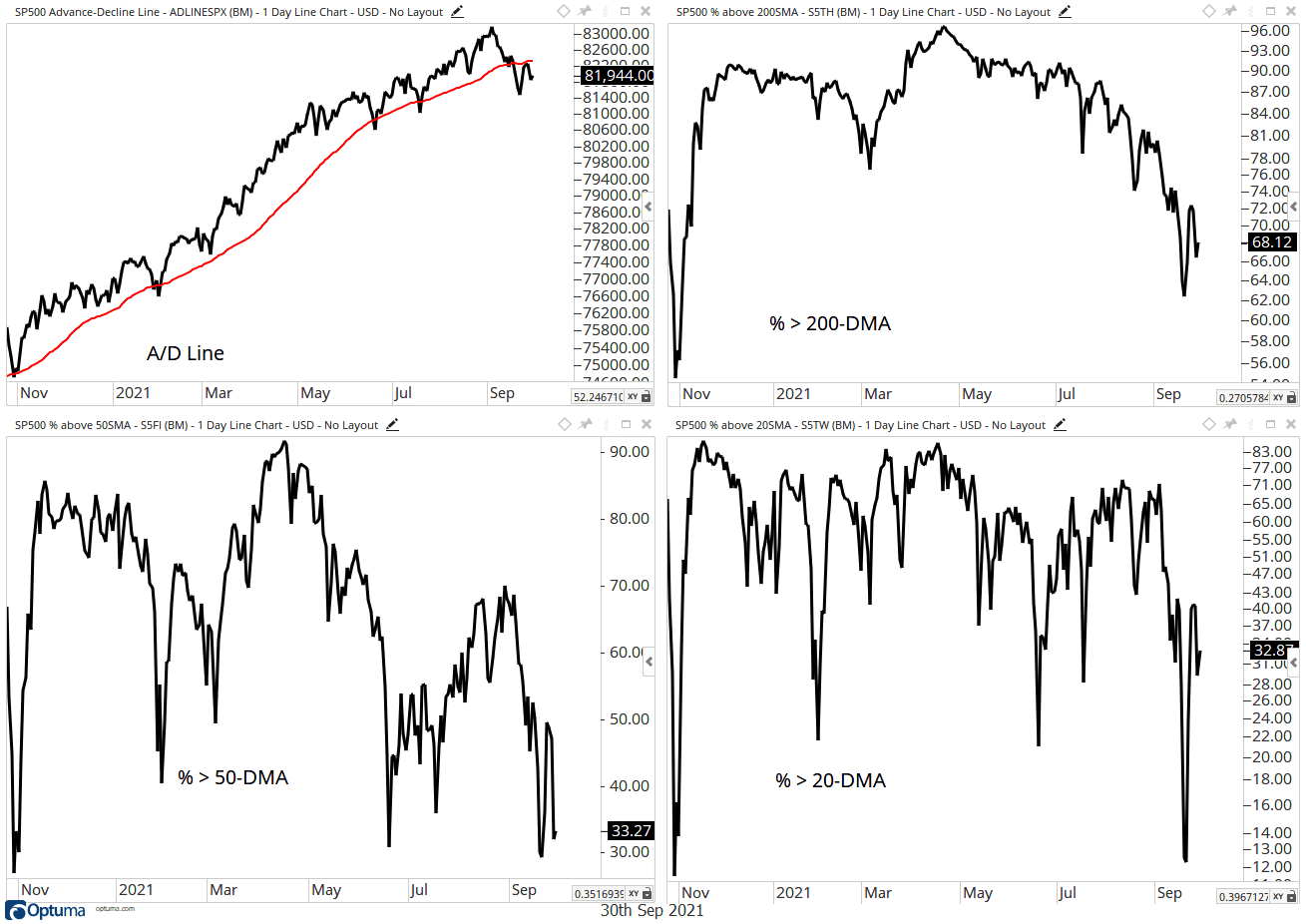
SmallCap Breadth
Breadth metrics for the S&P 600 Small Cap Index have improved over the past two weeks but have yet to register higher highs:
- Advance/Decline Line: Testing the 50-day moving average after holding support.
- Percent Above Their 200-Day Moving Average: 53% from 48% two weeks ago.
- Percent Above Their 50-Day Moving Average: 52% from 38% two weeks ago.
- Percent Above Their 20-Day Moving Average: 56% from 33% two weeks ago.
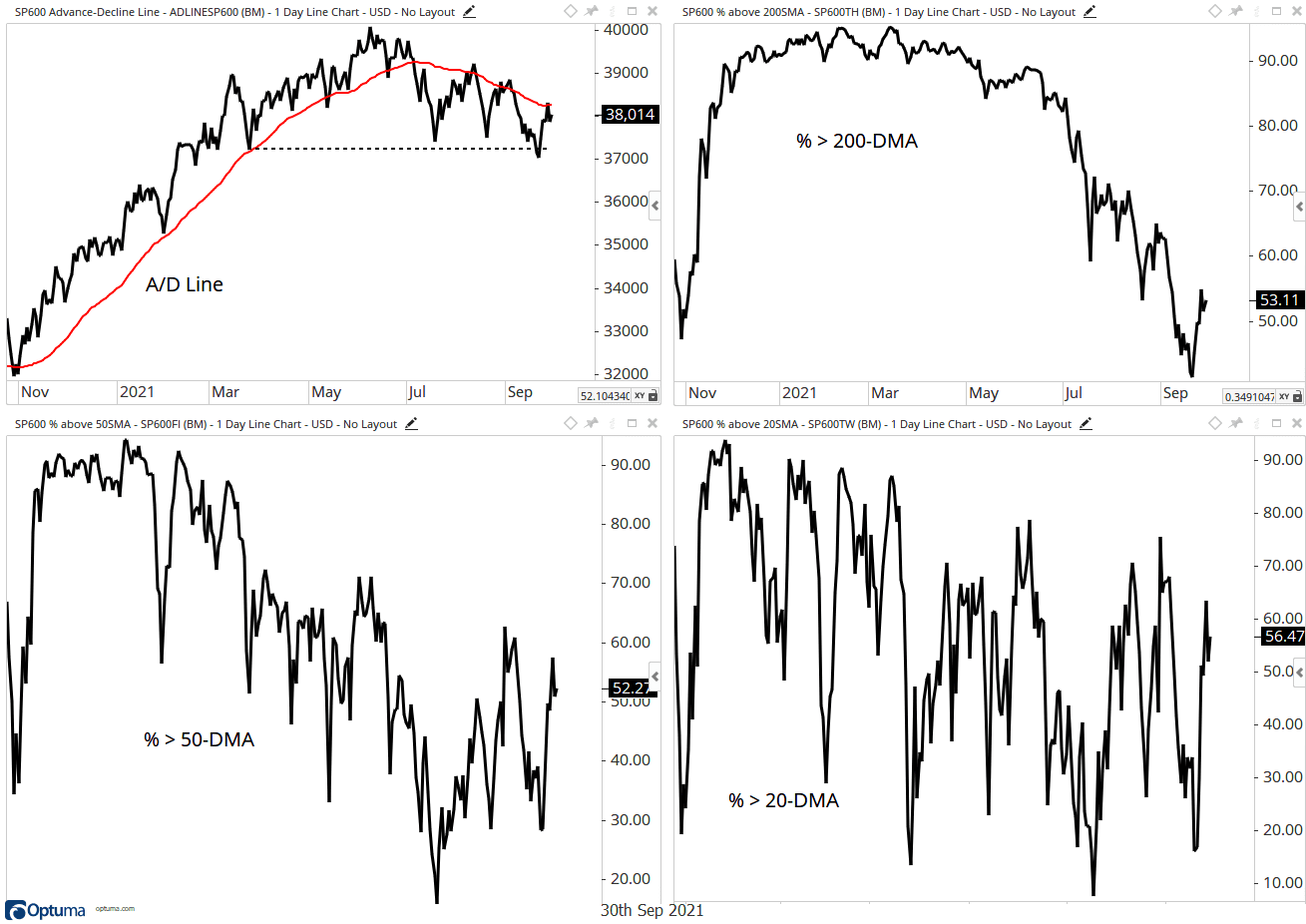
Take-Aways:
Lack of breadth confirmation has been a key part of the bear case for equities for most of the year. Recent weakness in the market has not done much to improve this dynamic. However, we note that Small Cap breadth has become “less bad” in the near term. Metrics for the S&P Small Cap 600 have improved over the past two weeks, along with short-term outperformance by the S&P 500 Equal Weighted Index.
